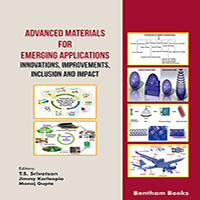Abstract
In the prevailing era, an influential shape memory alloy (SMA) nitinol has
emerged as a potentially viable and economically affordable material that is capable of
playing a significant role in both existing and emerging technological applications
spanning the domains of aircraft and aerospace, biomaterials in bioengineering, sensors
in health monitoring, advanced manufacturing, and microelectromechanical systems
(MEMS), to name a few. A high strain recovering capability coupled with superelasticity are two key and essential characteristics of a “smart” material that distinguish
it easily from its conventional counterparts. The phase transformation behavior shown
by nitinol (NiTi) was found to be governed by intrinsic variations in temperature. In
order to obtain the desired application-based functionality of this high performing
material, potentially viable approaches include the following: (i) an alteration of its
chemical composition, (ii) the addition of ternary elements and quaternary elements,
and (iii) the use different processing treatments. These approaches are being constantly
studied, carefully and systematically examined and frequently reported in the published
literature. In this manuscript, an effort is made to present and discuss several of the
recent advances specific to the NiTi-based shape memory alloy applications and its
phase transformation behaviour when subject to processing treatments. The influence
of compositional variation of the NiTi-based shape memory alloys (SMAs) and even its
ternary variants and quaternary variants, coupled with the role and/or influence of
different processing treatments on both macroscopic properties and microscopic
properties is the focus. The emphasis on increasing the suitability of shape memory
alloys (SMSs) for selection and use in a spectrum of sensing-related or sensing specific
applications is highlighted and briefly discussed.
Keywords: Compositional variation, NiTi-based shape memory alloy (SMA), Phase transformation behaviour, Processing treatments, Shape memory alloy (SMA).




















